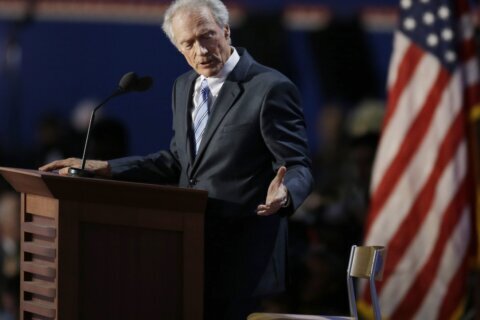When federal student loan interest rates increase again in July 2024, undergraduate students taking out direct loans for the 2024-2025 academic year will see some of the highest rates in over a decade.
Meanwhile, graduate and professional degree students and parents taking out direct Grad PLUS or Parent PLUS loans face rates not seen in decades.
The following rates, set by the U.S. Congress, are for federal student loans disbursed after July 1, 2024:
— Undergraduate direct loan interest rates will increase to 6.53%, from 5.50%.
— Graduate and professional direct loan rates will be 8.08%, up from 7.05%.
— PLUS loans will have a 9.08% interest rate, up from 8.05%.
It’s the highest interest rate for direct unsubsidized loans for undergraduate borrowers since the 2012-2013 academic year, when they were 6.8%, and the highest for direct subsidized loans since the 2007-2008 school year, when they were also 6.8%. These interest rates have climbed since the 2020-2021 academic year, when they were at a historic low 2.75% during the COVD-19 pandemic. In addition, although Congress uses a Treasury note formula to set the interest rates, increases also can be affected by inflation.
Graduate student federal loan rates are at their highest since the 2000-2001 school year, while PLUS loans are the highest they’ve been since the 1991-1992 school year, says Mark Kantrowitz, financial aid expert and author of the book, “How to Appeal for More College Financial Aid.”
[Read: An Ultimate Guide to Understanding College Financial Aid.]
While rate hikes are not unusual, experts say this round of increases is significant, with each rate going up more than a full percentage point.
“This means borrowers may be paying more over the life of their loan, especially if their loans are unsubsidized, meaning they’ll accrue interest while the borrower is in school,” says Dana Kelly, vice president of professional development and institutional compliance for the National Association of Student Financial Aid Administrators. “This leads to loan capitalization and will have student borrowers paying interest on interest.”
Student loan interest rates are fixed, meaning current borrowers are locked into the interest rate they received when they took out a specific loan.
While some students and parents are able to pay for college without loans, most students need to borrow, according to 2022 data reported to U.S. News. As the rate hike takes effect, experts offer some strategies to minimize their impact.
Borrow Only What You Need
The maximum amount that undergraduate students can borrow each year in federal direct subsidized and unsubsidized loans ranges from $5,500 to $12,500 per year, depending on their year in school and whether they’re a dependent or independent student. Graduate and professional students can borrow up to $20,500 in direct unsubsidized loans each academic year.
“In general, you should borrow as little as you need, not as much as you can,” Kantrowitz says. “Another way to put that is, ‘live like a student while you’re in school so you don’t have to live like a student after you graduate.'”
A good rule of thumb is not to borrow more for your entire college education than your anticipated first-year salary, some experts say. This may be difficult for students unsure of their major or future career, but having a figure in mind can help limit the amount borrowed, Kantrowitz says.
“If your total debt is less than your annual income, you should be able to afford to pay off your student loans in 10 years or less,” he says, “otherwise you may need to use an income-driven repayment plan or extended repayment plan to make the payment plans more affordable.”
Those repayment plans can mean you’ll pay more in interest over the life of the loan, because they reduce the monthly payment by increasing the term of the loan.
Search for Free Money
One of the first things borrowers should do is complete the Free Application for Federal Student Aid, or FAFSA, which students are required to submit each year to be considered for federal and some other sources of financial aid. This can determine eligibility for federal grants, such the Pell Grant that helps eligible lower-income students pay for college.
Students also should apply for any scholarship for which they may be eligible, Kantrowitz says, including those from colleges, community organizations, local cultural affinity groups, and religious and athletic organizations. This can help students significantly decrease or eliminate borrowing.
[How to Pay for College Without Loans]
Various scholarship matching websites can help, such as Going Merry, Scholarships.com, Fastweb and the College Board’s BigFuture.
“Every dollar you save is a dollar less you’re going to have to borrow,” Kantrowitz says.
Pay With Monthly Tuition Plans
Some schools allow students to pay their tuition in monthly installments rather than in full at the beginning of each semester. Spreading out the cost can make it easier to pay out of pocket in smaller amounts and limit borrowing.
These payment plans are often not well advertised, and families aren’t always aware of the option, says Shannon Vasconcelos, senior director of education finance at Bright Horizons College Coach. Schools typically charge a sign-up fee, often around $100, but the monthly payments rarely have interest attached, experts say.
“If a family can look at their cash flow, their monthly paycheck, and see if they can budget that monthly cash flow to pay the entire tuition bill or even just a portion of their tuition bill on a monthly basis to either avoid borrowing altogether or minimize the amount they have to borrow, I think that is a really good strategy that families should take a look at,” Vasconcelos says.
Pay Unsubsidized Loan Interest While in School
Borrowers are not required to make monthly payments on subsidized federal loans while enrolled in school at least half time, or during the six-month grace period after a student graduates or leaves school. But unsubsidized loans continue to accrue interest while a student is enrolled and during the grace period.
This may leave some surprised at how much they owe once repayment starts. Students with unsubsidized loans are encouraged to make interest-only payments while in school, if possible, to avoid capitalization, Kelly says.
“These are typically quarterly payment options and often are very reasonable,” she says.
Loan repayment calculators can help families calculate how much they can expect to pay. Once in repayment, borrowers should consider enrolling in automatic payments because most student loan servicers offer a .25% interest rate reduction on monthly payments. Kantrowitz also encourages families to claim up to $2,500 in interest payments on federal student loans, which he says can save the typical borrower a few hundred dollars on their taxes.
Weigh Federal Loans vs. Private Loans
Although federal student loan interest rates are climbing, in most cases they’re still lower than private loan rates and come with more repayment options and assistance programs.
[Private Student Loans vs. Federal Student Loans: What’s the Difference?]
While federal student loan interest rates are fixed, some private loans may have variable rates that could reach as high as 15%. Private loan rates depend on a borrower’s credit history and the whether a borrower chooses a variable or fixed rate. These ultimately help determine the repayment amount, says Jan Miller, president of Miller Student Loan Consulting, LLC.
For borrowers who can afford a shorter term with a higher monthly repayment amount — perhaps someone who anticipates a high salary right out of college — then some private loan options with shorter repayment terms may be appealing, Miller says.
He notes that one drawback of private loans is that they’re not eligible for Public Service Loan Forgiveness or forbearance programs, which can help borrowers who may struggle financially right out of college or at any point during repayment. With federal loans, borrowers are eligible for up to a total of three years of hardship forbearance or general forbearance.
“By the time you add up four years of disbursements and interest, they’re looking at a payment that they probably didn’t expect,” Miller says. “If that happens with a private loan, tough beans. You pay or default. The federal loan, even the Parent loan, is going to put borrowers in a much more favorable position and much less anxiety-inducing condition once they enter repayment.”
Trying to fund your education? Get tips and more in the U.S. News Paying for College center.
More from U.S. News
How Transferring Colleges Can Affect Financial Aid
FAFSA Changes: What Is the Student Aid Index?
How Multiple Kids in College Affects Financial Aid
How to Prepare for Dramatically Higher Federal Student Loan Interest Rates originally appeared on usnews.com







